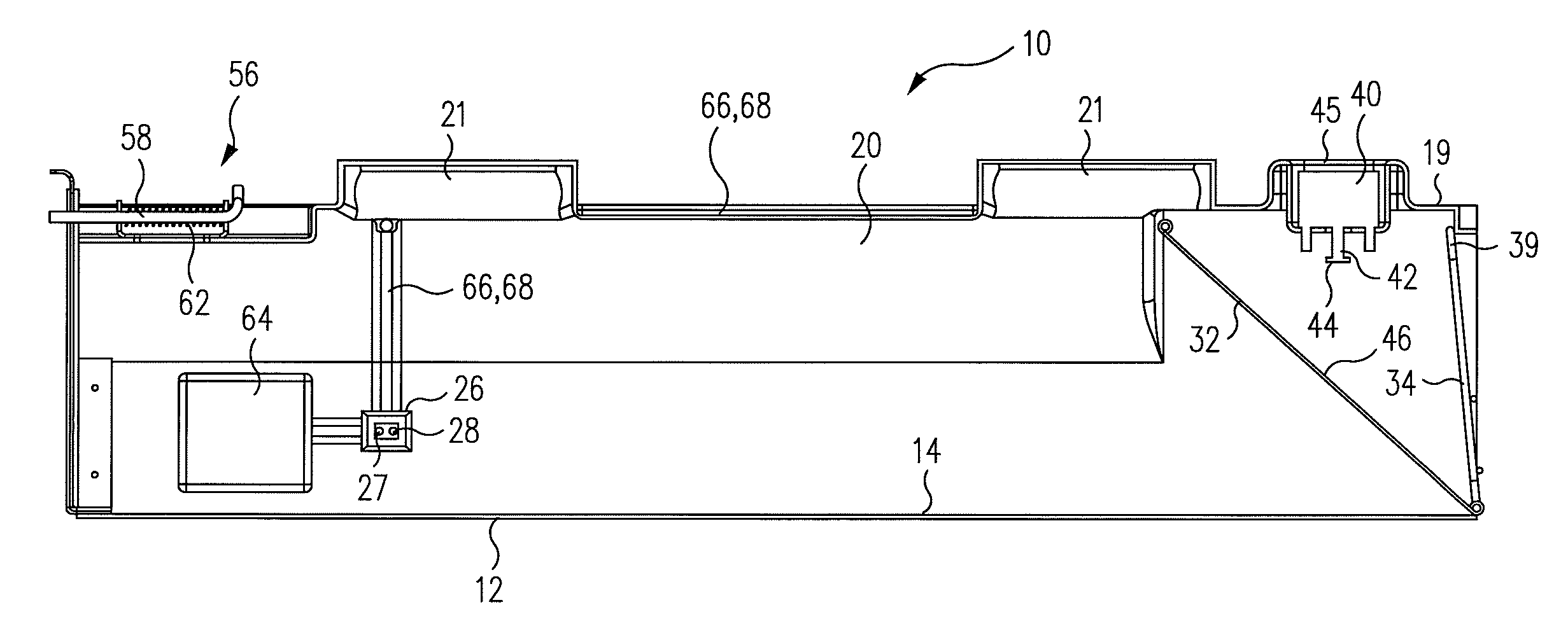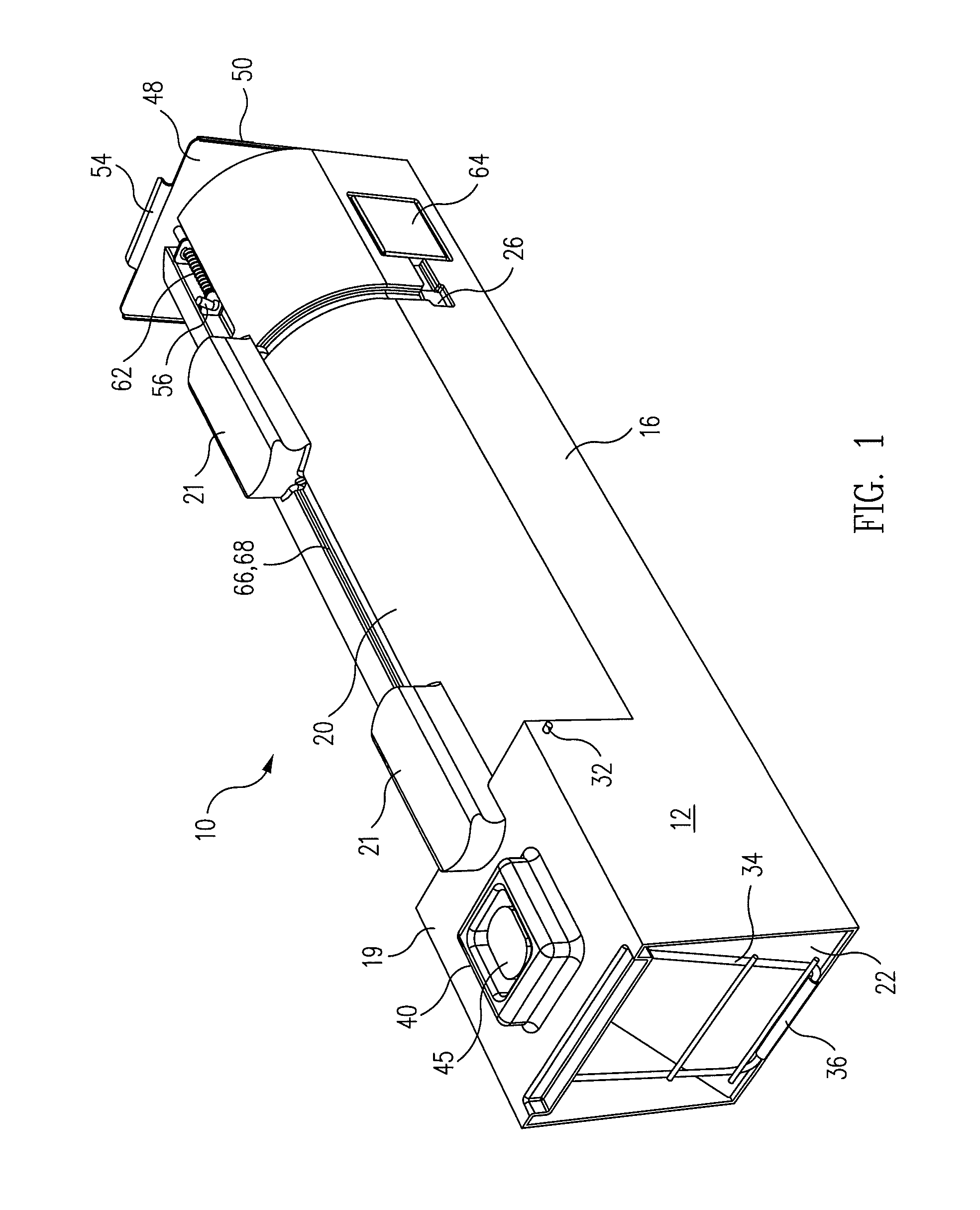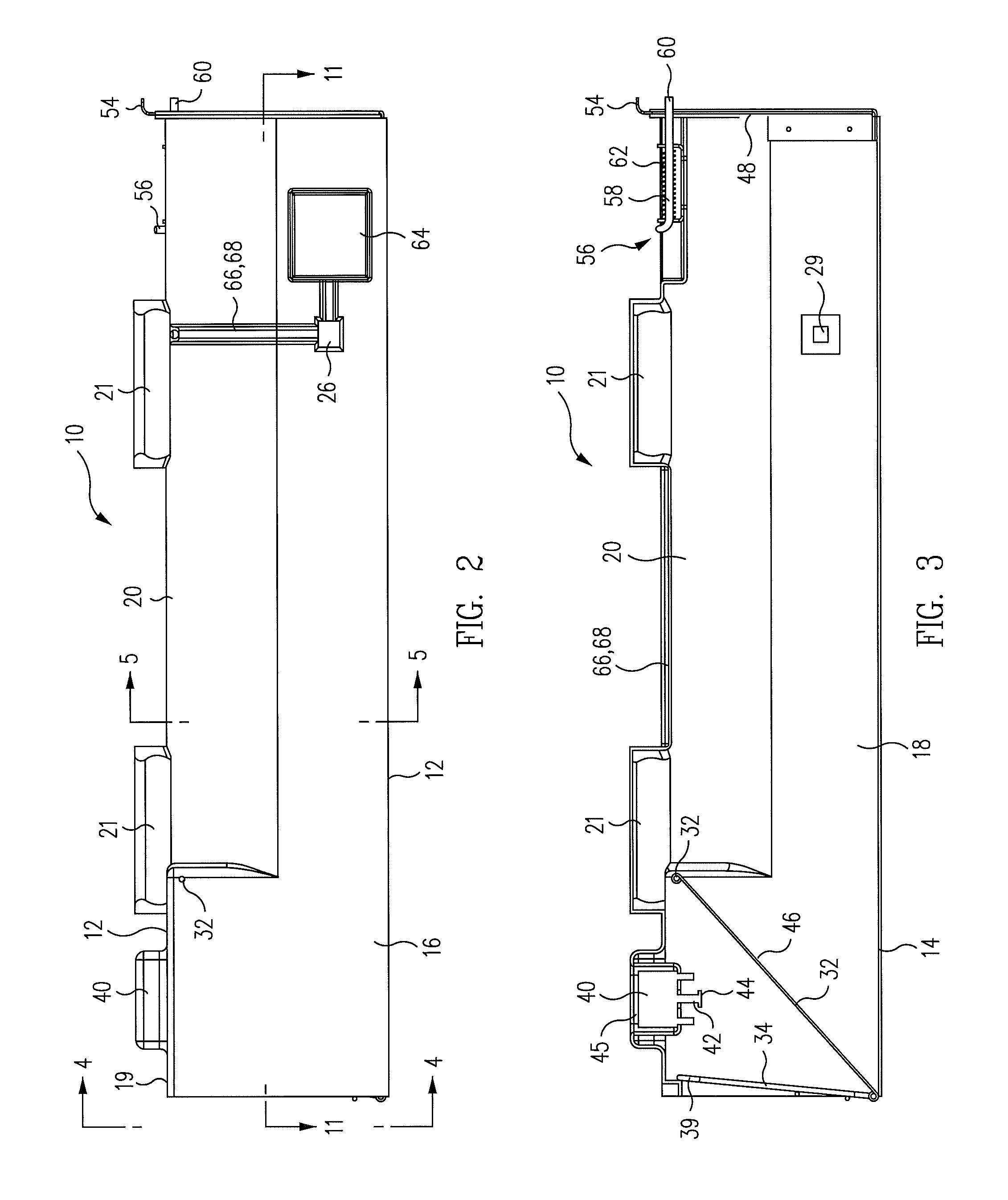Humane animal trap
a humane and animal technology, applied in the field of animal traps, can solve the problems of affecting the sensitivity and/or speed of operation affecting the reliability of the animal trap, and being more expensive and complex to implement reliably in the animal trap, etc., and achieves the effects of simple setting and use, low weight, and low cos
- Summary
- Abstract
- Description
- Claims
- Application Information
AI Technical Summary
Benefits of technology
Problems solved by technology
Method used
Image
Examples
Embodiment Construction
An exemplary embodiment of a humane, or “live,” animal trap 10 in accordance with the present disclosure is illustrated in the upper front and right side perspective view of FIG. 1. As illustrated in the several views of the figures, the exemplary animal trap 10 comprises an elongated enclosure 12 having a generally rectangular cross-section, front and rear ends, a generally flat floor 14 (see, e.g., FIG. 3), upstanding and generally parallel right and left sidewalls 16 and 18 (see, e.g., FIG. 11), a top wall comprising flat and arcuate portions 19 and 20, a pair of carrying handles 21, an entry opening 22 located at the front end thereof, and an exit opening 24 (see, e.g., FIG. 13) located at the rear end thereof.
In contrast to trap enclosures of the prior art, which typically incorporate a wire mesh construction, the enclosure 12 of the exemplary trap 12 comprises a molded plastic, e.g., polypropylene, for lower weight and a rugged resistance to corrosion resulting from extended e...
PUM
 Login to View More
Login to View More Abstract
Description
Claims
Application Information
 Login to View More
Login to View More - R&D
- Intellectual Property
- Life Sciences
- Materials
- Tech Scout
- Unparalleled Data Quality
- Higher Quality Content
- 60% Fewer Hallucinations
Browse by: Latest US Patents, China's latest patents, Technical Efficacy Thesaurus, Application Domain, Technology Topic, Popular Technical Reports.
© 2025 PatSnap. All rights reserved.Legal|Privacy policy|Modern Slavery Act Transparency Statement|Sitemap|About US| Contact US: help@patsnap.com



